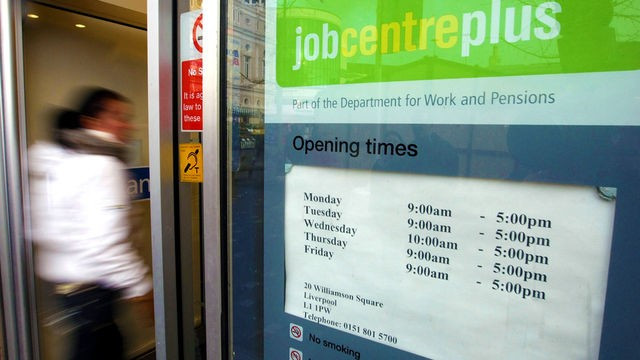Unemployment figures bring little cheer and an underlying fear

The latest Unemployment figures announced on 11 August 2010 did at least look good. The level reduced by 0.2 percent on the quarter to 7.8 percent, the same level as this time last year. Unemployment for the three months to June 2010 fell to 2.46 million, a fall of 49,000, the largest quarterly drop for three years. Mr Chris Grayling, Employment Minister, told the BBC that what he found encouraging was that "there had been one of the biggest jumps for a very long time in employment levels, and particularly in private sector employment levels." Did he know of any part of the public sector hiring?
His optimism is confirmed by the Labour Force Survey which showed that the number of people in work at the end of June 2010, though still over half a million less than two years ago, reached 29.02 million. A substantial rise of 184,000 on the quarter, it was the largest quarterly rise since 1989. This put the increase for the year at 104,000 and brought the Working Age Employment Rate to 70.5 percent, up 0.3 percent on the quarter yet down by the same level on this time last year.
Meanwhile, the figures for the claimant count were a lot more sobering. The count in July stood at 1,461,200 a very small decrease of 3,800 on June's figures, though down 120,000 for the year, indicating that the trend decrease has virtually come to a standstill. Definitely not reassuring given the time of year. England registered the lowest level at 3.5 percent, Wales had 3.6 per cent, followed by Scotland at 4.0 percent and lastly Northern Ireland with 5.0 percent.
A breakdown of the 184,000 quarterly increase in employment does give rise to an element of caution, if not yet concern. A large majority of the increase was in part-time employment which accounted for 115,000 of the total. Reading this figure, I remembered shopping with my wife at Tescos some weeks back and noticing that for the first time in 18 months, the company had vacancies - about eight - on their in-store noticeboard. They were very promptly filled and the board is back to its normal empty state. None of the jobs on offer were full-time and were typically 16 - 22 hours. Might suit a student or housewife with children wanting to take in a little extra, but insufficient to pay the mortgage. Part-time employment in the UK, now reaching 7.84 million, accounts for 27 percent of the total and is the largest figure since records began.
The number of full-time workers did increase by 68,000 for the quarter and now stands at 21.18 million.
The number unemployed for up to 12 months fell by 82,000 to 1.66 million, but those unemployed for over 12 months rose 33,000 over the quarter to reach 796,000, the highest quarterly total since March,1997. According to Mark King in The Guardian, 170,000 of these are over 50 years old and this reflects a substantial rise of 52 percent during the past year.
Youth charity, The Prince's Trust told The Guardian on 11 August 2010: "There are now 1.9 million children growing up in families where no-one works...With no role models and little confidence, these vulnerable youngsters fear their own destiny lies in the dole queue, as they are pushed further from the jobs by the backlog of unemployed graduates."
A little cheer can be taken in that there was a small decrease of 6,000 in the number of unemployed people aged between 18 and 24. The unemployment level for this group now stands at 724,000.
As usual, the overall figures hid local and regional variations. In ascending order, the regional rates of unemployment were as follows:
South West 6.1
South East 6.1
Northern Ireland 6.6
East Anglia 6.8
East Midlands 7.4
North West 8.1
West Midlands 8.3
Scotland 8.4
Wales 9.0
Yorkshire & Humberside 9.1
London 9.3
North East 9.4
It can be seen that the UK average hides a greater than 50 percent variance between best and worst regions. England's Unemployment rate at 7.7 percent decreased by 0.2 percent on the quarter, helped by a recovery in manufacturing and exports, in large part from the West Midlands. The West Midlands had been the worst area affected by unemployment until recently, with a level of over 10 percent, so this is encouraging news and just the type of employment that the Government is wanting to see. Wales too has seen a decrease of 0.3 percent.
The bad news is in Scotland. Here there was an increase of 7,000 to 223,000 in the level of Unemployment, a rise of 0.2 percent to 8.4 percent and 34,000 more than a year ago. The claimant count also rose in Scotland, up by 1,700 on the quarter to stand at 135,400, this an increase of 5,200 on the corresponding 2009 period.
As for the Claimant Count, this too recorded wide variations. Birmingham Ladywood recorded a 15.4 percent male claimant figure. Middlesbrough had a 12.1 percent male count and an overall 8.2 percent figure, an increase of 5.0 percent on a year earlier and no doubt reflecting the Corus steel plant lay-offs.
That the Government didn't trumpet the decrease in the count of Unemployment too loudly, must reflect the fact that their own policies with regard to cutting the deficit, sharp public sector job cuts - 43 percent of Middlesbrough's workforce are employed in the public sector - combined with subdued public confidence, all go to make it more likely that unemployment is bound to rise before we see any significant falls.
© Copyright IBTimes 2025. All rights reserved.




















